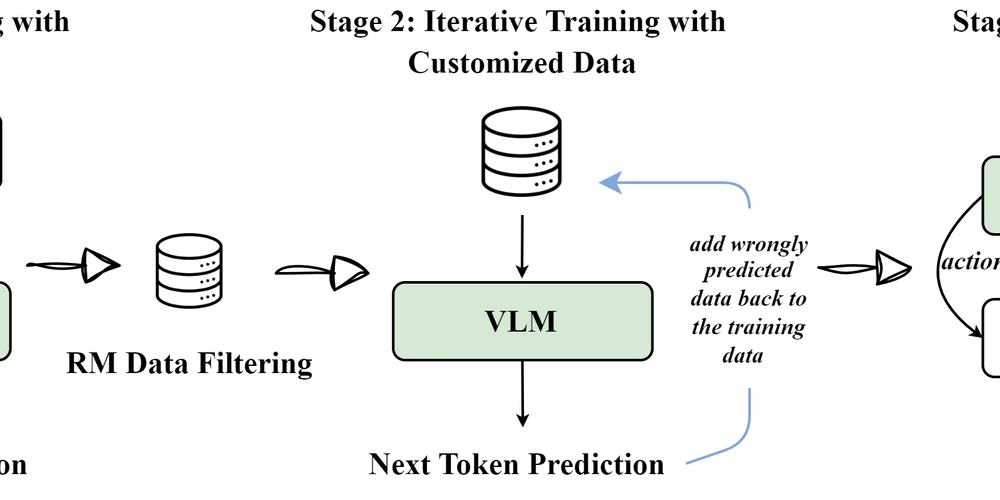How Physiotherapy Supports Workplace Wellness: Injury Prevention and Recovery
Workplace accidents are a developing issue in several industries, impacting employees' fitness and productivity. From repetitive pressure injuries (RSIs) in place of job settings to musculoskeletal disorders in physically demanding jobs, artwork-related injuries can cause aches, aches and lengthy-term disability if left untreated. One of the only tactics to control and save you from these accidents is physiotherapy. By specializing in ache remedy, rehabilitation, and ergonomic improvements, physiotherapy performs a critical function in making sure more healthy and more inexperienced personnel. This article explores how physiotherapy saves you and enables you to address place-of-painting injuries whilst enhancing your well-being. Common Workplace Injuries and Their Causes Work-related injuries range depending on activity roles and place of work situations. Some of the most regularly encountered accidents encompass: 1. Repetitive Strain Injuries (RSIs) RSIs result from repetitive movements and sustained awkward postures. Common examples embody carpal tunnel syndrome (due to excessive typing or mouse use), tendinitis, and tennis elbow. 2. Lower Back and Neck Pain Long hours of sitting, negative computing device setup, and wrong posture contribute to chronic returned and neck aches. These problems are common among workplace employees, drivers, and those who carry out heavy lifting. 3.Sprains and Strains Improper lifting techniques, unexpected actions, and overexertion can cause muscle and ligament injuries. These are common in industries requiring physical labour, collectively with production and warehousing. 4. Slips, Trips, and Falls Hazards like wet flooring, choppy surfaces, and horrific lights contribute to falls, primarily to accidents like fractures, concussions, and soft tissue harm. 5. Joint Pain and Mobility Issues Prolonged sitting or status can cause stiffness within the knees, shoulders, and hips. Employees in professions that demand continuous movement, which includes healthcare and retail, frequently enjoy joint pain due to pressure. How Physiotherapy Helps Prevent and Treat Workplace Injuries Physiotherapists hire various proof-based totally techniques to deal with place-of-job injuries and improve mobility. Here are some key strategies physiotherapy advantages personnel: 1. Pain Management and Rehabilitation Physiotherapy treatments, along with manual treatment, healing-wearing activities, ultrasound treatment, and electric-powered stimulation, assist in alleviating aches and accelerate recuperation. Individualized rehabilitation plans ensure that personnel regain energy and features after damage. 2. Improving Posture and Workplace Ergonomics Poor posture is a prime cause of persistent aches and aches. Physiotherapists provide posture tests and propose ergonomic modifications, which include the right desk setup, chair help, and computer modifications, to reduce stress on the body. 3.Strength and Flexibility Training A loss of muscle power and versatility increases injury threat. Physiotherapists design customized exercising applications to enhance center stability, decorate flexibility, and reduce vulnerability to lines and sprains. 4. Conducting Workplace Ergonomic Assessments A physiotherapist can examine an employee's pocketbook and advise improvements like ergonomic chairs, reputation desks, proper reveal placement, and stretching breaks to lower pressure. 5. Education on Injury Prevention Physiotherapists train personnel on right-frame mechanics, lifting strategies, and stretching sports to save you from injuries. Training durations and workshops can appreciably reduce place of business damage expenses. The Benefits of Integrating Physiotherapy into Workplace Wellness Programs Many employers are incorporating physiotherapy into their health and well-being applications to create greater secure work surroundings. The advantages encompass: Faster Recovery Times: Employees who get the right of entry to physiotherapy recover from accidents faster, allowing them to go back to work faster. Increased Productivity: Pain-unfastened personnel are more green and engaged, which is major to better productivity degrees. Reduced Absenteeism: Fewer administrative center injuries lead to fewer ill days and reduced employee turnover. Cost Savings: Preventative physiotherapy measures reduce long-term healthcare prices and personnel reimbursement claims. Enhanced Employee Satisfaction: A willpower to place of work health fosters an amazing artwork culture and boosts worker morale. Conclusion Physiotherapy performs an essential feature in stopping, managing, and rehabilitating places of business injuries. Through targeted remedy plans, ergonomic improvements, and proactive training, physiotherapists help personnel preserve advanced bodily

Workplace accidents are a developing issue in several industries, impacting employees' fitness and productivity. From repetitive pressure injuries (RSIs) in place of job settings to musculoskeletal disorders in physically demanding jobs, artwork-related injuries can cause aches, aches and lengthy-term disability if left untreated.
One of the only tactics to control and save you from these accidents is physiotherapy. By specializing in ache remedy, rehabilitation, and ergonomic improvements, physiotherapy performs a critical function in making sure more healthy and more inexperienced personnel.
This article explores how physiotherapy saves you and enables you to address place-of-painting injuries whilst enhancing your well-being.
Common Workplace Injuries and Their Causes
Work-related injuries range depending on activity roles and place of work situations. Some of the most regularly encountered accidents encompass:
1. Repetitive Strain Injuries (RSIs)
RSIs result from repetitive movements and sustained awkward postures. Common examples embody carpal tunnel syndrome (due to excessive typing or mouse use), tendinitis, and tennis elbow.
2. Lower Back and Neck Pain
Long hours of sitting, negative computing device setup, and wrong posture contribute to chronic returned and neck aches. These problems are common among workplace employees, drivers, and those who carry out heavy lifting.
3.Sprains and Strains
Improper lifting techniques, unexpected actions, and overexertion can cause muscle and ligament injuries. These are common in industries requiring physical labour, collectively with production and warehousing.
4. Slips, Trips, and Falls
Hazards like wet flooring, choppy surfaces, and horrific lights contribute to falls, primarily to accidents like fractures, concussions, and soft tissue harm.
5. Joint Pain and Mobility Issues
Prolonged sitting or status can cause stiffness within the knees, shoulders, and hips. Employees in professions that demand continuous movement, which includes healthcare and retail, frequently enjoy joint pain due to pressure.
How Physiotherapy Helps Prevent and Treat Workplace Injuries
Physiotherapists hire various proof-based totally techniques to deal with place-of-job injuries and improve mobility. Here are some key strategies physiotherapy advantages personnel:
1. Pain Management and Rehabilitation
Physiotherapy treatments, along with manual treatment, healing-wearing activities, ultrasound treatment, and electric-powered stimulation, assist in alleviating aches and accelerate recuperation. Individualized rehabilitation plans ensure that personnel regain energy and features after damage.
2. Improving Posture and Workplace Ergonomics
Poor posture is a prime cause of persistent aches and aches. Physiotherapists provide posture tests and propose ergonomic modifications, which include the right desk setup, chair help, and computer modifications, to reduce stress on the body.
3.Strength and Flexibility Training
A loss of muscle power and versatility increases injury threat. Physiotherapists design customized exercising applications to enhance center stability, decorate flexibility, and reduce vulnerability to lines and sprains.
4. Conducting Workplace Ergonomic Assessments
A physiotherapist can examine an employee's pocketbook and advise improvements like ergonomic chairs, reputation desks, proper reveal placement, and stretching breaks to lower pressure.
5. Education on Injury Prevention
Physiotherapists train personnel on right-frame mechanics, lifting strategies, and stretching sports to save you from injuries. Training durations and workshops can appreciably reduce place of business damage expenses.
The Benefits of Integrating Physiotherapy into Workplace Wellness Programs
Many employers are incorporating physiotherapy into their health and well-being applications to create greater secure work surroundings. The advantages encompass:
- Faster Recovery Times: Employees who get the right of entry to physiotherapy recover from accidents faster, allowing them to go back to work faster.
- Increased Productivity: Pain-unfastened personnel are more green and engaged, which is major to better productivity degrees.
- Reduced Absenteeism: Fewer administrative center injuries lead to fewer ill days and reduced employee turnover.
- Cost Savings: Preventative physiotherapy measures reduce long-term healthcare prices and personnel reimbursement claims.
- Enhanced Employee Satisfaction: A willpower to place of work health fosters an amazing artwork culture and boosts worker morale.
Conclusion
Physiotherapy performs an essential feature in stopping, managing, and rehabilitating places of business injuries. Through targeted remedy plans, ergonomic improvements, and proactive training, physiotherapists help personnel preserve advanced bodily health and productiveness. Companies that prioritize physiotherapy as part of their administrative center wellness packages not only decorate workers' well-being but also foster healthier, more secure, and more efficient work surroundings.
By integrating physiotherapy into occupational health projects, companies can make certain long-term blessings, lessen harm-related costs, and promote a way of life in the place of work health. Investing in physiotherapy isn't always pretty much in treating injuries—it is about stopping them and creating a sustainable, powerful employee.



































































![Apple Watch to Get visionOS Inspired Refresh, Apple Intelligence Support [Rumor]](https://www.iclarified.com/images/news/96976/96976/96976-640.jpg)
![New Apple Watch Ad Features Real Emergency SOS Rescue [Video]](https://www.iclarified.com/images/news/96973/96973/96973-640.jpg)
![Apple Debuts Official Trailer for 'Murderbot' [Video]](https://www.iclarified.com/images/news/96972/96972/96972-640.jpg)
![Alleged Case for Rumored iPhone 17 Pro Surfaces Online [Image]](https://www.iclarified.com/images/news/96969/96969/96969-640.jpg)




























































































































































































![[The AI Show Episode 143]: ChatGPT Revenue Surge, New AGI Timelines, Amazon’s AI Agent, Claude for Education, Model Context Protocol & LLMs Pass the Turing Test](https://www.marketingaiinstitute.com/hubfs/ep%20143%20cover.png)



































































































































































































































